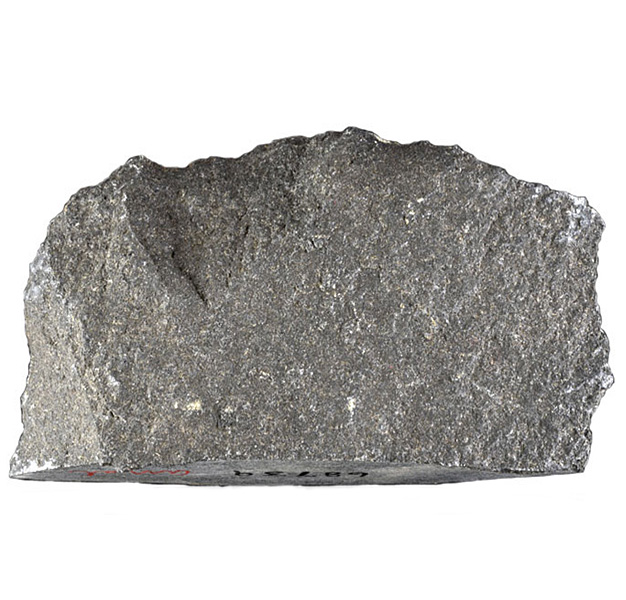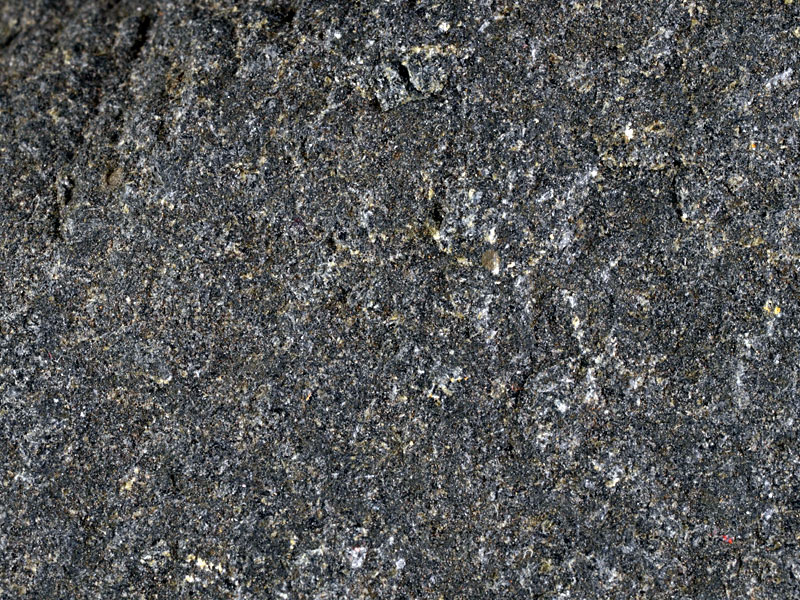
Fact sheet
This basalt sample was part of a flow from the Antrim plateau basalt in Northern Ireland. The basalt flows emerged from fissure eruptions during the eruption of the North Atlantic volcanic province around 55 million years ago, during the Paleogene period. Our sample is the same basalt that forms the Giant's Causeway, a famous columnar basalt exposure on the Antrim coast. The site is a UNESCO world heritage site so this sample comes from basalt outcrops a few hundred metres to the east. The Giant's Causeway is just one of many columnar basalt exposures around the UK, such as Fingal's Cave on the Isle of Staffa. Columns of basalt form when a thick lava flow cools and contracts, allowing vertical cracks to open up and migrate down through the rock. These 'cooling' cracks generally create hexagonal shapes, but other polygonal shapes also occur.
The sample is a medium-grained basalt in thin section, consisting of a framework of plagioclase with pyroxene forming a poikilitic texture. There are patches of alteration that may once have been olivine or glass but are now entirely transformed to clay minerals and chlorite.
The United Kingdom Virtual Microscope (UKVM) collection consists of igneous, sedimentary and metamorphic rocks from around the UK.
It is intended as a teaching resource, helping to tell the story of the common rock types and how they form, and reflecting the history of the UK at the margins of the continent of Europe. The collection is a series of teaching sets, for example igneous rocks from the North Atlantic Igneous Province and SW England; high-temperature metamorphic rocks from Scotland and low-temperature metamorphic rocks from Wales; and sedimentary rocks, including English limestones and sandstones.







